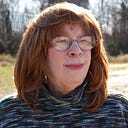When I Grow Up I Wanna Be a Colorista
Remember when everyone was having their colors done and what you wore depended on whether you were Summerfall Winterspring? (Bonus points for getting that reference.) I don’t think people do that so much anymore, but I do know there’s a whole lot of money to be made in the world of color. And I don’t just mean adult coloring books, which were a thing, but I think are over.
For this to make any sense, you have to know about Pantone. Pantone is a color system that allows people to make different shades out of their basic components: black, red, yellow, and cyan. (Cyan is a fancy word for a certain shade of blue.) Those are the colors that make up all the other colors that appear, for example, in magazines, in clothing, and just about everywhere else.
Pantone has a spiffy color wheel that shows you all the Pantone colors and the formulas that make up each one. Even better, once a year Pantone gets to pick a “color of the year” that everyone will be wearing and splashing all over their products and signs and so forth. This year, they got a little boring and chose a color called “Classic Blue,” which admittedly has the advantage that pretty much everyone is able to wear it, except maybe springs.
But where color really gets exciting is in the realm of paint swatches. My husband and I were recently picking out all-new colors for our house, and, let me tell you, Sherwin Williams has Pantone beat all hollow. The SW color book is several inches thick, with seven different shades on every page.
What’s really fun is the names for the colors. I imagine a group of coloristas sitting around and thinking up names for all the swatches. My study, for example, is going to be painted a color called Armagnac, which is a rusty sort of clay color. (Armagnac is also a kind of brandy or cognac. Some might say that I’m entirely likely to splash Armagnac all over my walls, but they’re wrong. That stuff is expensive. But I digress.)
Most of our other choices were pretty obvious. The living room is going to be lime granita, which you can probably figure out is green of some sort, though what it has to do with the frozen fruit treat I couldn’t say. The bathrooms are going to be sumptuous peach (I’m sensing a fruit theme emerging here). The kitchen will be sleepy hollow; the bedroom will be sunny veranda; and my husband’s study will be breaktime.
The ones that have me puzzled are sleepy hollow and breaktime, both of which are shades of blue. I would have thought a color called sleepy hollow would have been a muddy, ominous gray and breaktime would be the color of coffee, but no.
Most of the colors in the SW book have sensible names like decisive yellow and daisy and lemon twist, but others are a bigger stretch. Just going by names, how would a person know that “restful” is teal, “baroness” is purple, and “serape” is copper?
Personally, I would like to be one of the coloristas assigning names. No classic blue for me. I would name colors with interesting-sounding but indecipherable names like “lollipop,” “sharknado,” and “bubble wrap.” Imagine painting your kitchen “cheap perfume” and then trying to find curtains that match. Or convincing your 12-year-old that “diagonal” is a perfectly charming color for her room. “Bowling ball,” “cat’s nose,” and “overripe kiwi” would be entertaining too. Then there are the possibilities of adding adjectives to actual colors: “apathetic red,” “responsible puce,” and “sprightly brown.”
Sherwin Williams would probably fire me on my first day, but even one day as a colorista would be pretty sweet. (Idea! A paint color called “sweet patootie” or “sweet chariot” or “sweet substitute” or … !)
